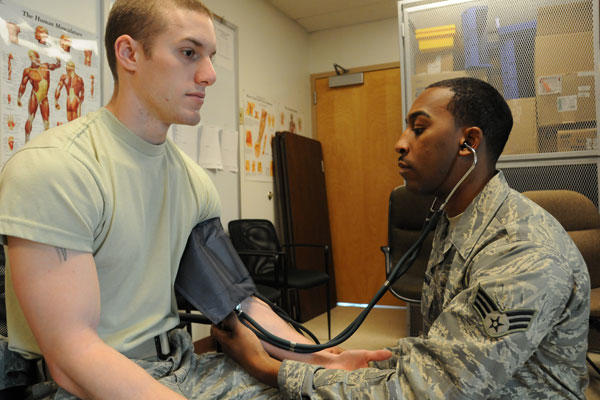The new Defense Department budget proposal for 2017 sent today to Congress drastically increases the cost of healthcare for military retirees under 65 and reorganizes the current Tricare system, but otherwise includes few other major military family program reforms.
Under the new proposal the primary three Tricare options -- Tricare Prime, Tricare Standard and the services used by retirees -- would be combined into two basic plans. Like the current Tricare Prime and Standard options, the newly minted Tricare Select and Tricare Choice would continue to offer free services at Military Treatment Facilities (MTFs) and require co-pays for services from in-network civilian providers. Like Tricare Prime, Tricare Select would require users to receive referrals for specialty care, while Tricare Choice would operate like Tricare Standard, allowing users to self-refer.
Active duty families and retirees could choose between the two plans and pay graduated fees between $20 and $250 for non-MTF care, depending on the service provided. As in the current Tricare Prime system, active-duty families stationed in remote areas far away from an MTF would be permitted to see in-network civilian providers without paying additional fees.
The major price changes are reserved for retirees. Under the new plan those users would be forced to pay a yearly enrollment fee through an open-enrollment type process regardless of which Tricare option they choose. Currently, retirees using Tricare Prime pay $282.60 per year for a single person or $565.20 for a family, while Standard requires no enrollment fee. The new system, however, would require retirees pay a $350 enrollment fee for individuals or $700 for families for Tricare Select, and $450 for individuals or $900 for families for Tricare Choice.
The increases are part of a $524 billion Defense Department budget request. Unlike recent years, the request includes no major commissary or housing allowance reform requests. Instead, those programs will continue to be impacted by legislation already in motion, including a push to change raise and lower commissary prices on a regional basis and plans to decrease Basic Allowance for Housing each year until it covers only 95 percent of troops' costs.
Tricare deductibles would also increase under the proposal. Active duty families under E4 would pay $100 for an individual or $200 for families, while all other users would pay $300 for an individual or $600 for a family. Catastrophic caps would also increase, landing at $1,500 for active duty families and $4,000 for retirees.
Future Tricare for Life users would also experience cost increases. Unlike current enrollees, newly qualified beneficiaries over 65 would be required to pay an annual fee of .5 percent of their gross retired pay for 2017, capped at $150 for most users and $200 for those who retired as flag officers. Those fees would increase to 2 percent by 2021, with a cap of $632 for most users and $842 for flag officers.
Pharmacy fees would also continue their gradual increase. Currently a 30-day supply of generic medication at a retail pharmacy is $10 while a brand-name drug is $24. Those prices would increase gradually to $14 and $46 by 2026. 90-day supplies filled through the mail order pharmacy are currently free for generics, $20 for brand name options and $49 for non-formulary. Those prices would increase to $14, $46 and $92 respectively by 2026.
-- Amy Bushatz can be reached at amy.bushatz@military.com




























